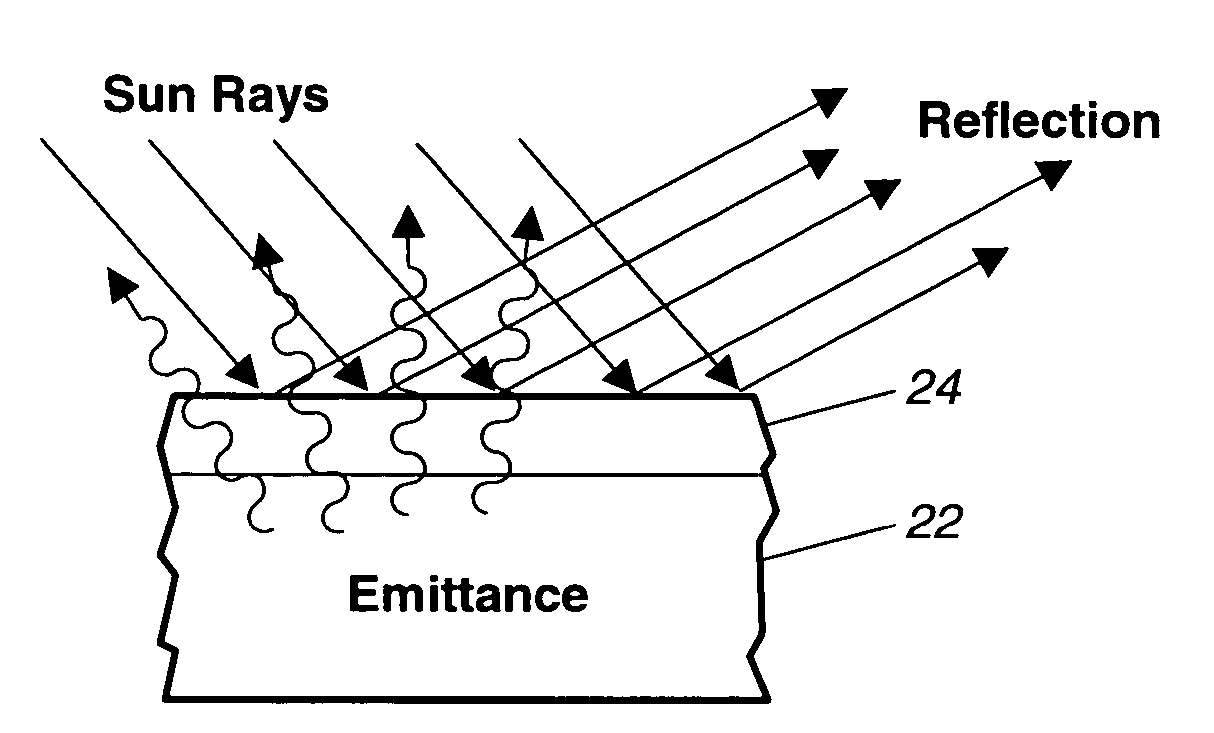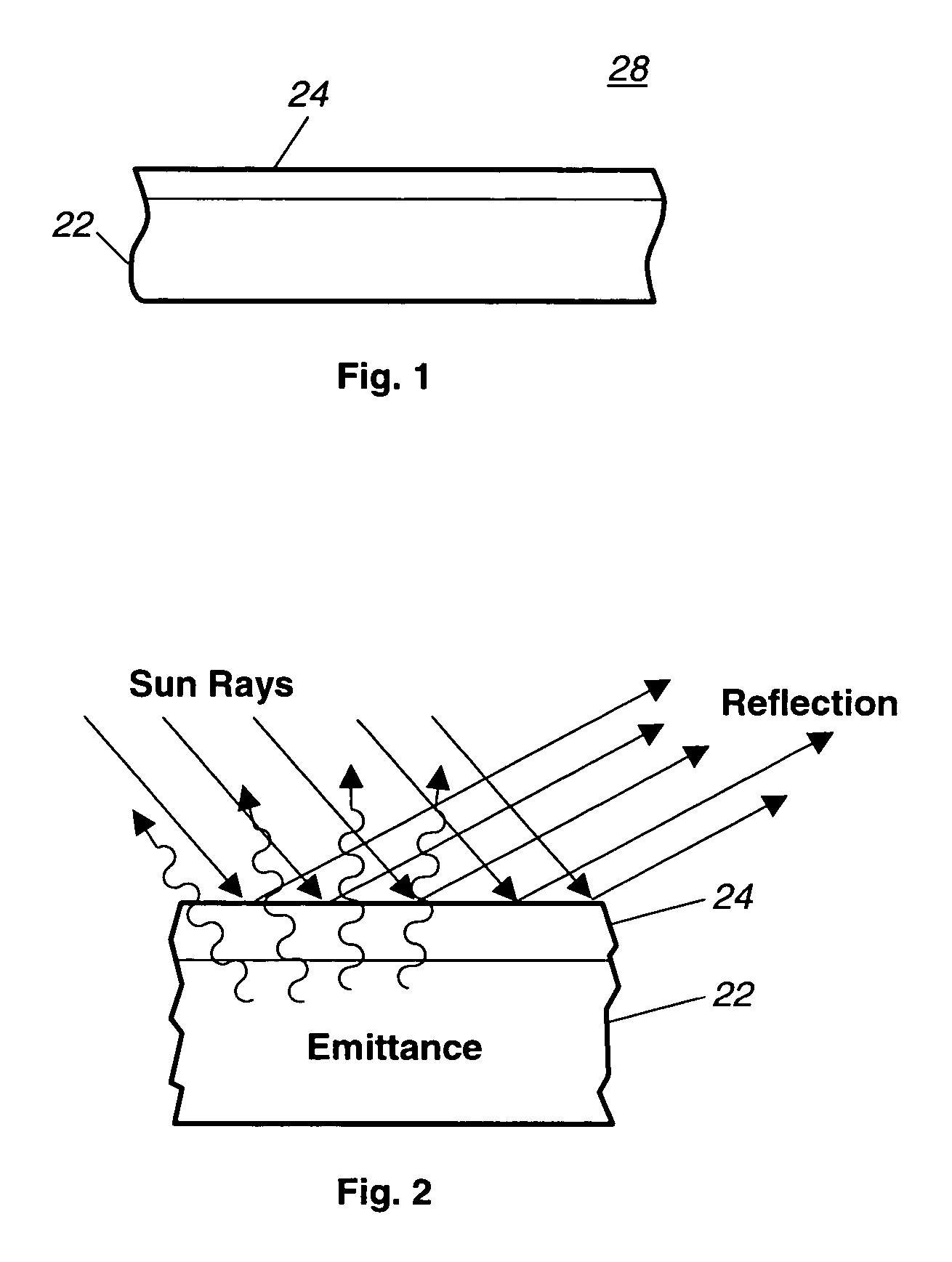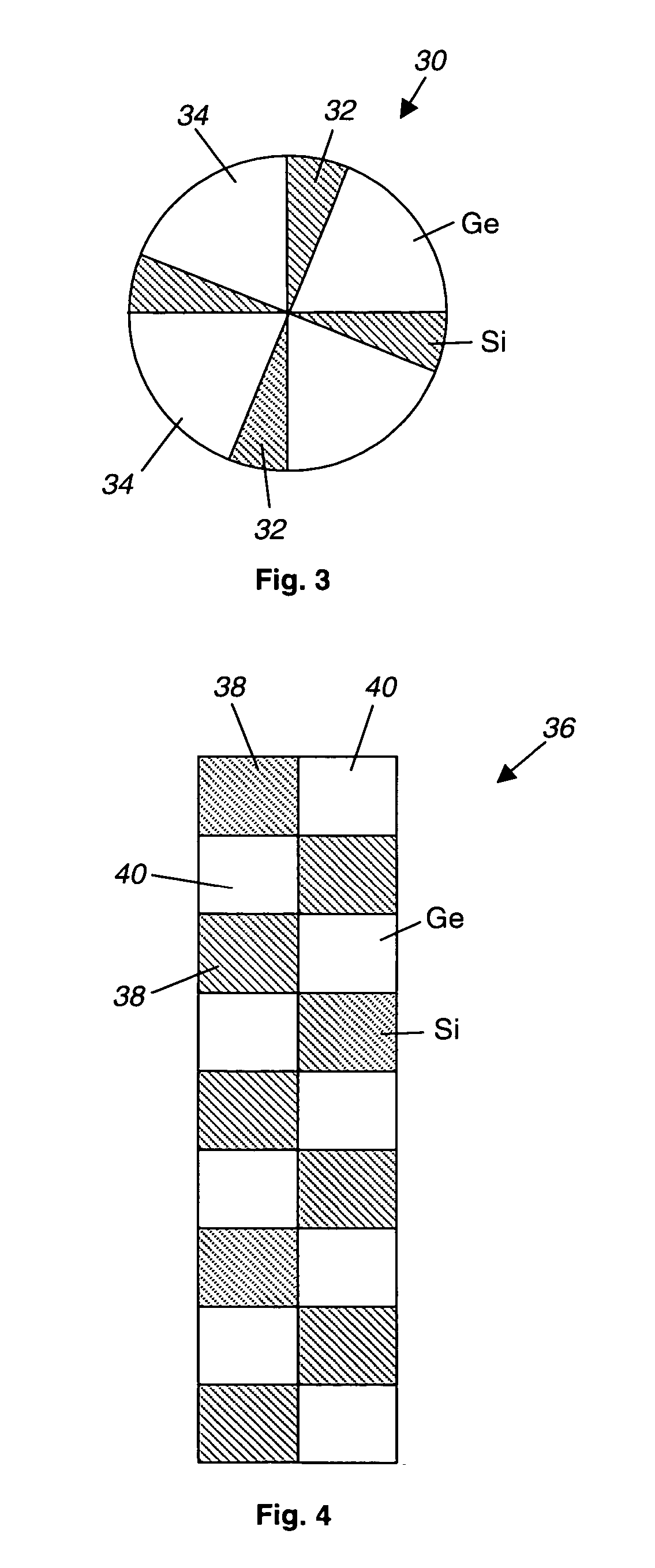Mixed germanium-silicon thermal control blanket
a technology of thermal control blankets and germanium silicates, applied in the direction of natural mineral layered products, transportation and packaging, cosmonautic radiation protection, etc., can solve the problems of increasing the complexity and cost of the manufacturing process, affecting the adhesion properties, and affecting the quality of the produ
- Summary
- Abstract
- Description
- Claims
- Application Information
AI Technical Summary
Benefits of technology
Problems solved by technology
Method used
Image
Examples
Embodiment Construction
[0014]As shown in the drawings for purposes of illustration, the present invention pertains to passive thermal control blankets. Prior to the present invention, a widely used type of thermal control blanket has been made by coating a substrate with a material that is highly reflective to radiation in the visible spectrum, but able to transmit emitted radiation from beneath the blanket. A germanium coating provides desirably good reflectivity properties but does not easily adhere to the substrate. Silicon adheres to the substrate more readily but does not have reflective properties as good as those of germanium. Layering the two materials one over the other has been suggested as a possible solution but this increases the complexity and cost of the process.
[0015]In accordance with the invention, silicon and germanium are coated onto the substrate of a thermal control blanket as a single homogeneous mixture. FIG. 1 shows the cross section of a fragment of a thermal control blanket, ind...
PUM
| Property | Measurement | Unit |
|---|---|---|
| wavelengths | aaaaa | aaaaa |
| reflectivity | aaaaa | aaaaa |
| reflectivity | aaaaa | aaaaa |
Abstract
Description
Claims
Application Information
 Login to View More
Login to View More - R&D
- Intellectual Property
- Life Sciences
- Materials
- Tech Scout
- Unparalleled Data Quality
- Higher Quality Content
- 60% Fewer Hallucinations
Browse by: Latest US Patents, China's latest patents, Technical Efficacy Thesaurus, Application Domain, Technology Topic, Popular Technical Reports.
© 2025 PatSnap. All rights reserved.Legal|Privacy policy|Modern Slavery Act Transparency Statement|Sitemap|About US| Contact US: help@patsnap.com



